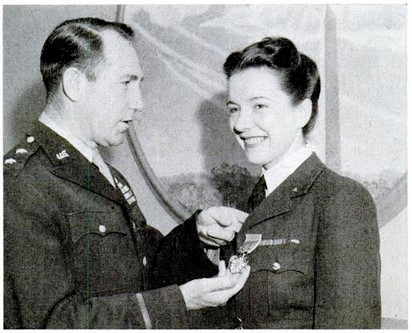#Wednesday #WomeninBritishIntel Constance 'Babs' Babington Smith (1912-2000) was a pioneer in photographic interpretation. During #WW2 she set up an aircraft interpretation section that became part of the Central Interpretation Unit based at RAF Medmenham.
Constance was born on 15 October 1912. Her parents were Sir Henry Babington Smith & Lady Elizabeth. She was one of nine children. She had an avid interest in aircraft - note her hat! Before the war, she pursued a career in journalism writing for @BritishVogue & @HistoryInTheAir
When #WW2 broke out, Constance joined the Women's Auxiliary Air Force. She was quickly promoted to Section Officer & asked to set up a new aircraft interpretation section for the @RoyalAirForce photographic reconnaissance unit. In 1941, the unit moved to Danesfield, a mansion ...
on the Thames River that became RAF Medmenham. The workforce grew from 231 to 1,700 and soon huts like those used @bletchleypark were constructed to house many of the sections.
It was here that Constance scoured postcard size photographs taken at high altitude with the aid of a stereo viewer & magnifying glass. She had a keen eye for the smallest of details, & a sixth sense that enabled her to identify new aircraft & secret weapons. She is seated left

Constance & her dedicated team made good use of stereoscopes. Aerial photos were taken in pairs, a split second apart. When the two photos were placed under a stereoscope, the interpreter could see the terrain in three dimensions.
Constance worked with geologists, geographers, archaeologists, mathematicians, map-makers etc., who interpreted huge numbers of photographs. During the preparations for the Normandy landings, seven million prints a month were sent for interpretation!
Constance is most famous for her findings at Peenemünde. She identified tiny burn marks around the airfield where jet/rocket engines had scorched the grass. This led to her identification of the world's first rocket fighter - the Messerschmitt Me 163 Komet.
After reviewing the photographs of Peenemünde again, Constance spotted something less than a millimetre in length on the photograph - the Flying Bomb - V1. British Intelligence were aware of such a weapon, but Constance was the first person to actually 'see' it.
Constance & her team identified additional V1 sites (or P-20s) in France with missiles pointed directly at Britain. Operation Crossbow (1943) a bombing campaign, ensured the V1 launch sites were flattened, guaranteeing the V-weapon offensive never reached its full potential.
In 1945, Constance was transferred to the United States where she performed photo interpretation during the final stage of the Pacific war. There she was awarded the U.S. Legion of Merit by Major General Frederick L Anderson.
After the war, Constance worked for @LIFE but returned to Britain in 1950 'exhausted'. She wrote about her secret wartime work. 'Evidence in Camera' was published in 1958 & was a clever pun on Medmenham’s in-house magazine. It was republished in the USA under the title 'Air Spy'.
An anonymous obituary @thetimes noted that Constance “could never quite set behind her the tragic background to the successes of photographic reconnaissance during the war, in which so many of the pilots who visited RAF Medmenham never returned from their long distance flights."

 Read on Twitter
Read on Twitter











